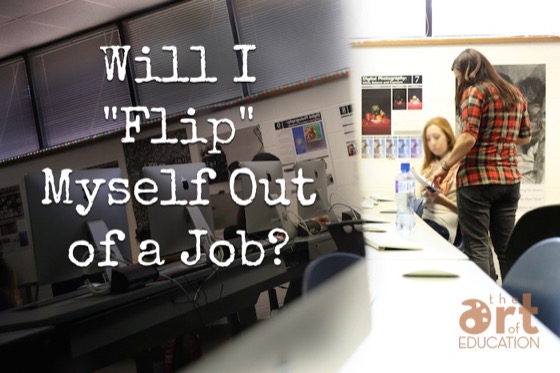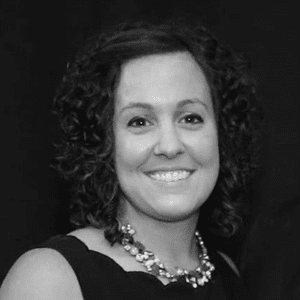 Today we welcome a guest post by art educator Johanna Russell who is a self-proclaimed “Flipper” (an art teacher who runs a flipped classroom) as well as one of AOEU’s newest instructors who specializes in flipped teaching. Today she will be discussing another concern about moving to a flipped model—flipping yourself out of a job! Thanks for joining us today, Johanna!
Today we welcome a guest post by art educator Johanna Russell who is a self-proclaimed “Flipper” (an art teacher who runs a flipped classroom) as well as one of AOEU’s newest instructors who specializes in flipped teaching. Today she will be discussing another concern about moving to a flipped model—flipping yourself out of a job! Thanks for joining us today, Johanna!

As art teachers, we often find ourselves defending our programs. We constantly have our guard up watching for the next threat to the arts. It might appear on the surface that creating flipped videos or moving to a “flipped teaching model” could replace us as trained professionals. However, any experienced flipper will tell you it does exactly the opposite.
Below are three perceived fears as well as the information you need to turn these misconceptions around.
1. “They will replace me with my videos by having the other subjects teach art.”

Truth: Flipping naturally leads to students pursuing more challenging content. Students learn the “easy stuff” that any teacher could teach quickly. They aren’t actually learning this stuff, they’re just doing this stuff. In a flipped classroom, the teacher needs to be highly trained because students will be engaging with the subject matter at a much higher level.
Example: A social studies teacher could probably teach how to shade a value scale, but he couldn’t teach how to apply that knowledge to shade a face, even with a video (see the next point to address this fear).
2. “But, art is a little like magic. It is easy once you see how the trick is done. My videos will share all of my secrets.”

Truth: Watching someone do something and actually being able to do it are two different things. The video replaces only the “instructional” part of teaching. It does not replace the “helping students to apply their new knowledge” part of teaching.
Examples: My doctor didn’t learn to perform surgery by watching it. She observed surgeries and then she had to be taught how to replicate what she saw. Khan Academy has not replaced math teachers, but it can increase how much a student can learn within a given amount of time. Students can learn more when the teacher and students spend the majority of their time engaged in learning activities rather than instruction.
3. “But, my _______ (insert a person who judges you: principal, co-workers, parents, etc.) will think that I am not doing my job.”
Truth: You will want to invite as many people as possible into your room. Give them the opportunity to see flipped teaching first-hand. The transformation of a flipped classroom is magical. Everyone is doing something. Discipline problems are few and far between. You will be managing the learning individually and in small groups. Students will not be clinging to you to solve their every problem. Welcome your principal, parents, other teachers, etc., into your classroom because, after all, seeing is believing.
The Real Truth
Teacher’s who flip are seen as educational leaders. It’s very unlikely that trying out flipped teaching will lead to negative results. It has been nothing but positive for me and the other art teachers who have given it a try!
Have you become a leader in your school by trying a new instructional strategy? What was it? How did it go?
What are some questions you have about flipped teaching?
Magazine articles and podcasts are opinions of professional education contributors and do not necessarily represent the position of the Art of Education University (AOEU) or its academic offerings. Contributors use terms in the way they are most often talked about in the scope of their educational experiences.




